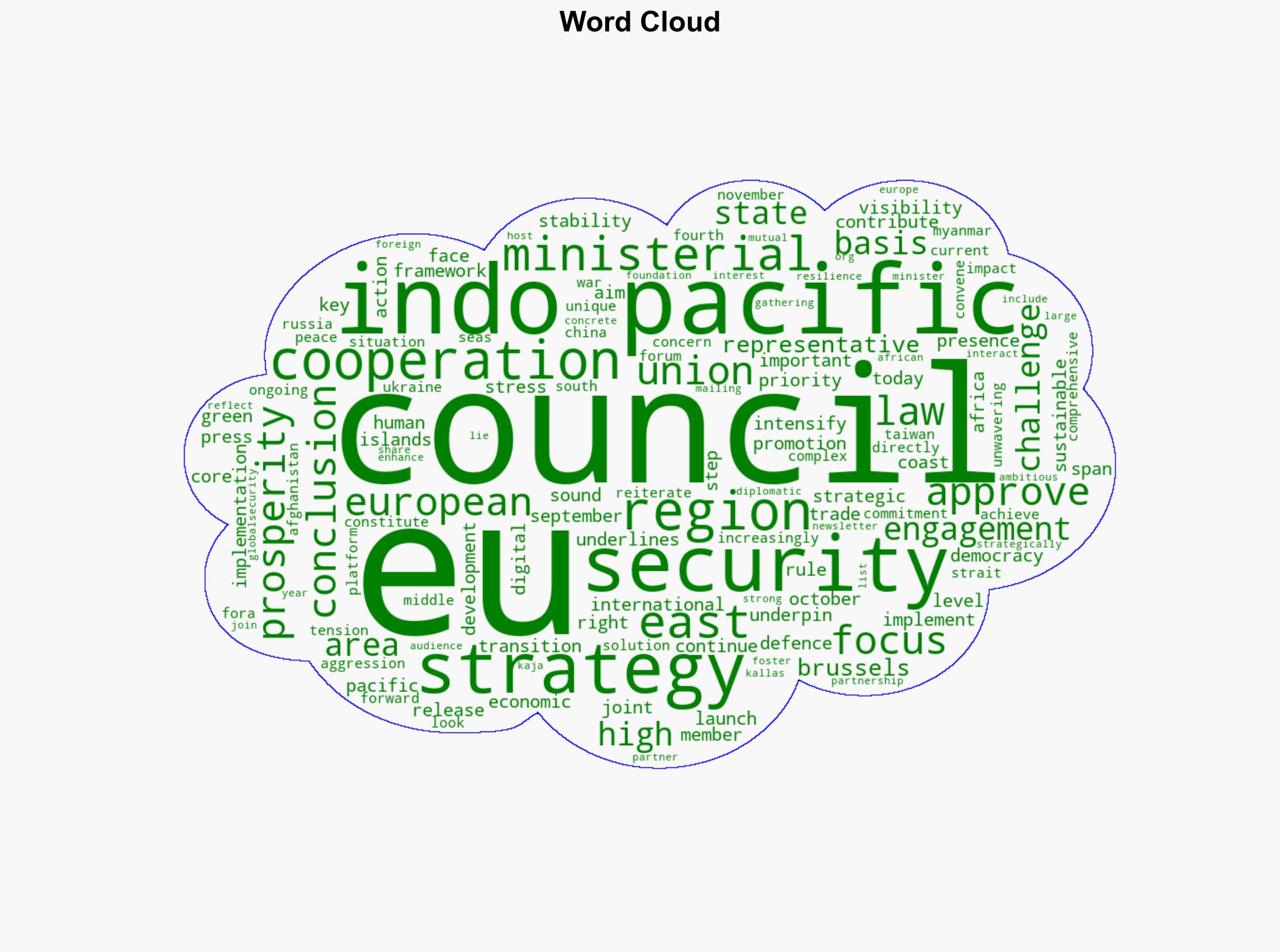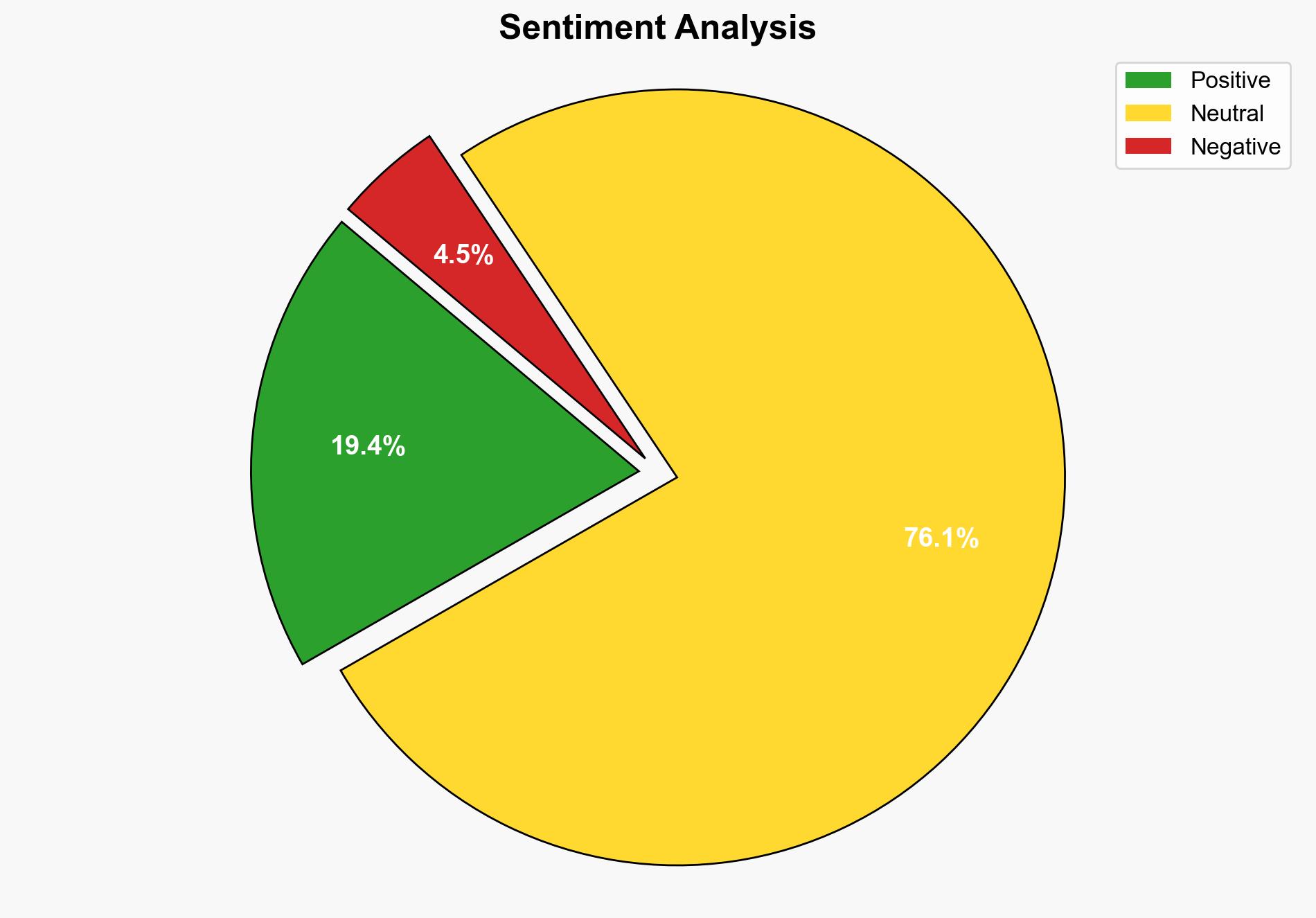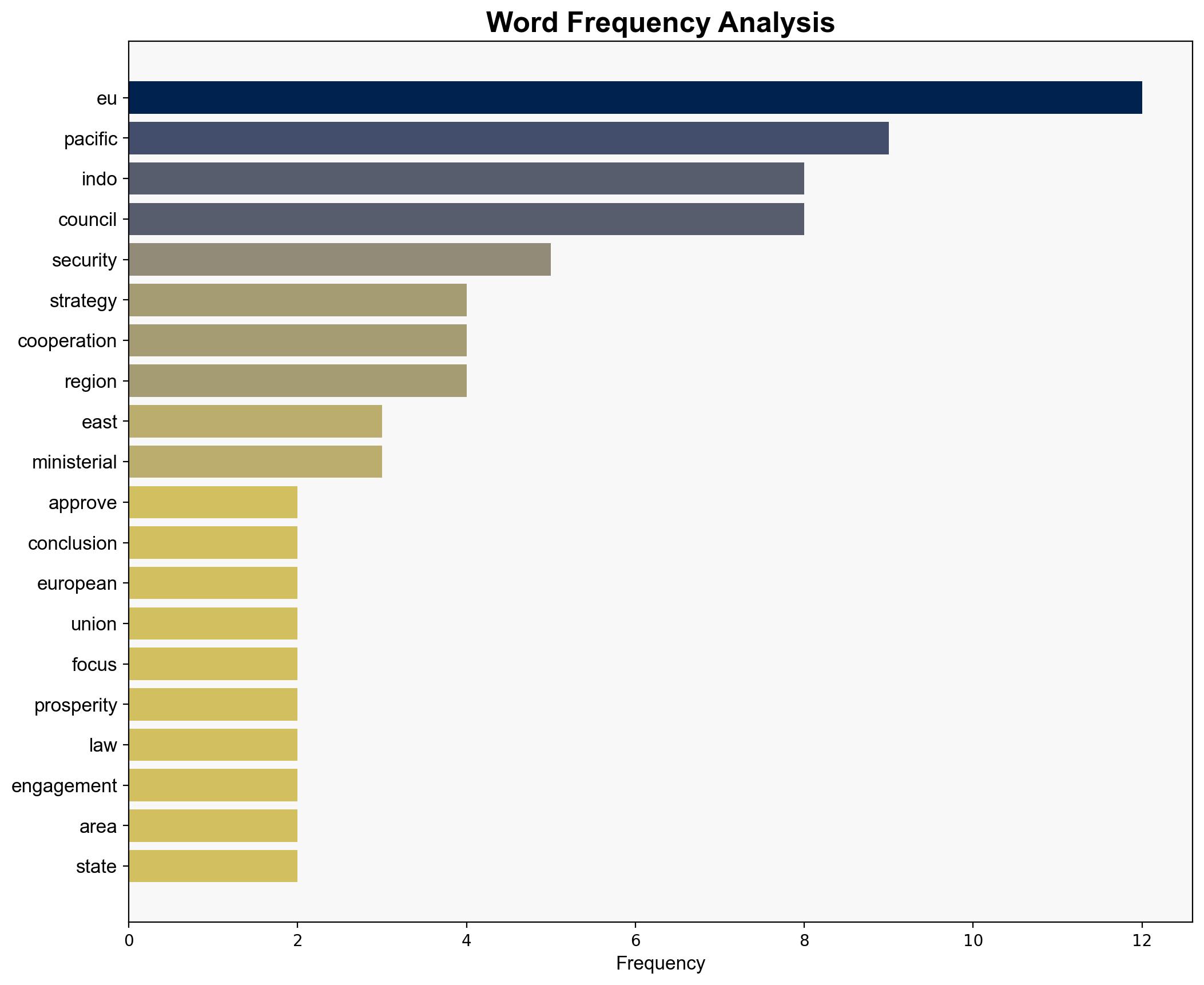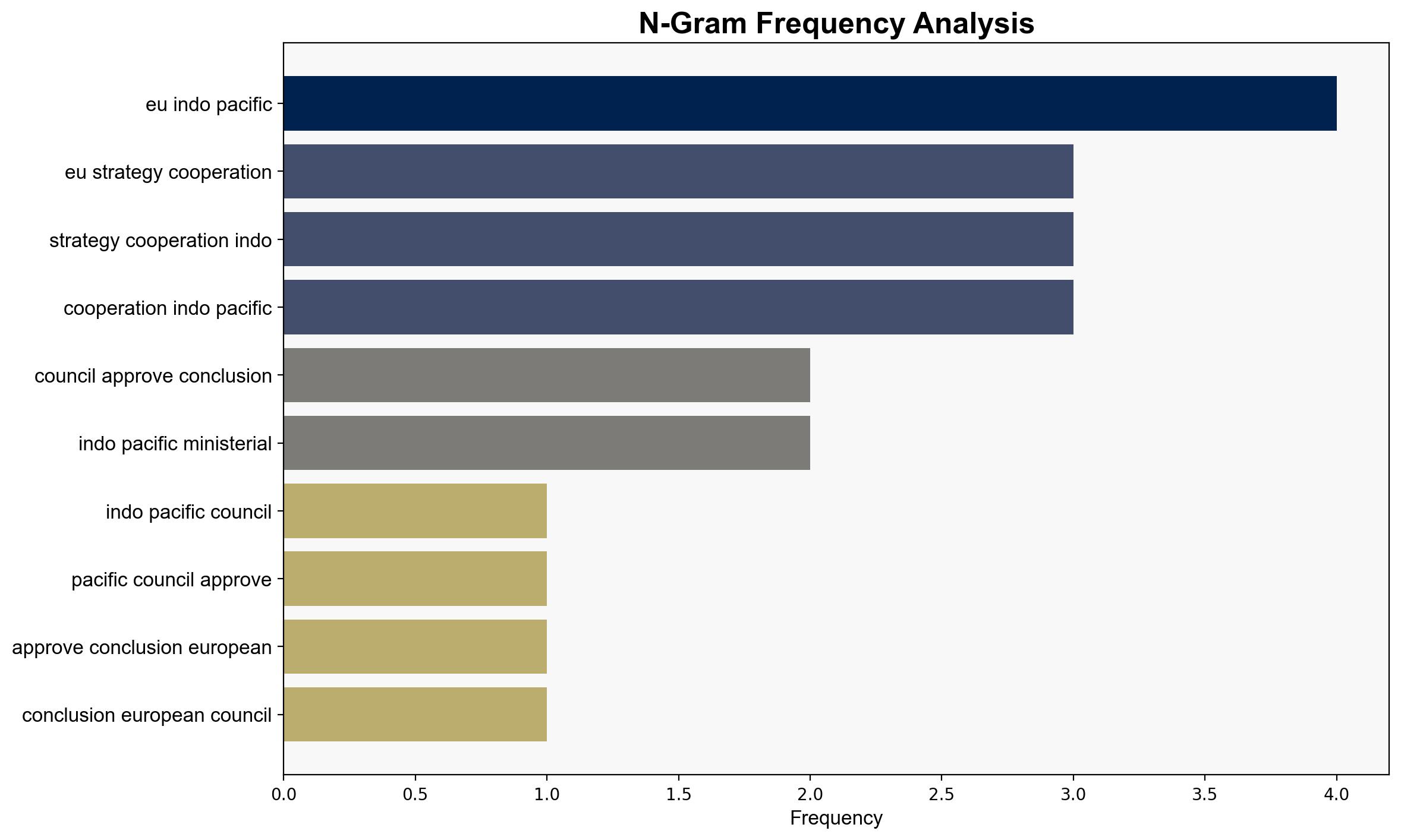EU Strategy for Cooperation in the Indo-Pacific Council approves conclusions – Globalsecurity.org
Published on: 2025-10-21
Intelligence Report: EU Strategy for Cooperation in the Indo-Pacific Council approves conclusions – Globalsecurity.org
1. BLUF (Bottom Line Up Front)
The EU’s strategy to enhance cooperation in the Indo-Pacific is primarily aimed at increasing its geopolitical influence and securing economic interests in the region. The most supported hypothesis suggests that the EU is responding to growing security challenges and the strategic competition between major powers. Confidence Level: Moderate. Recommended action is to monitor the implementation of this strategy and assess its impact on regional stability and EU’s global standing.
2. Competing Hypotheses
Hypothesis 1: The EU’s strategy is primarily driven by a need to counterbalance China’s growing influence in the Indo-Pacific region. This involves enhancing partnerships with regional players and promoting democratic values to ensure a rules-based international order.
Hypothesis 2: The EU’s strategy is focused on securing economic interests, particularly in trade and digital transitions, by establishing a stable and cooperative environment in the Indo-Pacific. This approach prioritizes economic security over direct geopolitical competition.
Using ACH 2.0, Hypothesis 1 is better supported due to the emphasis on security challenges, the mention of Russia’s aggression, and tensions in the South China Sea and Taiwan Strait, indicating a strategic focus beyond mere economic interests.
3. Key Assumptions and Red Flags
Assumptions:
– The EU assumes that increased presence and cooperation will effectively counterbalance other major powers.
– It is assumed that regional partners will align with the EU’s strategic interests.
Red Flags:
– Potential overestimation of the EU’s influence in the region.
– Lack of specific commitments or actions outlined in the strategy.
– Possible resistance from regional powers wary of EU’s increased involvement.
4. Implications and Strategic Risks
The EU’s strategy could lead to increased geopolitical tensions if perceived as a direct challenge to China’s influence. Economic partnerships might be strained if security concerns overshadow trade interests. The strategy’s success depends on the EU’s ability to balance its security and economic objectives without alienating key regional players.
5. Recommendations and Outlook
- Monitor regional responses to the EU’s strategy to identify potential alliances or conflicts.
- Engage in dialogue with major Indo-Pacific powers to mitigate risks of escalation.
- Scenario Projections:
- Best Case: Enhanced EU influence leads to stable partnerships and increased trade.
- Worst Case: Strategic missteps result in heightened tensions and economic fallout.
- Most Likely: Incremental progress in partnerships with mixed success in balancing security and economic goals.
6. Key Individuals and Entities
Kaja Kallas, High Representative of the EU, is a central figure in promoting and implementing the strategy. The European Council and the Council of the European Union are key entities driving this initiative.
7. Thematic Tags
national security threats, cybersecurity, counter-terrorism, regional focus




